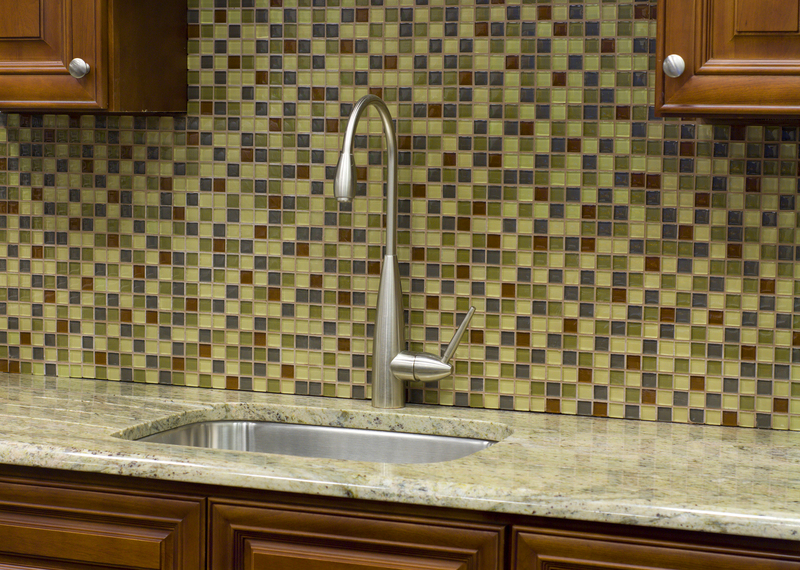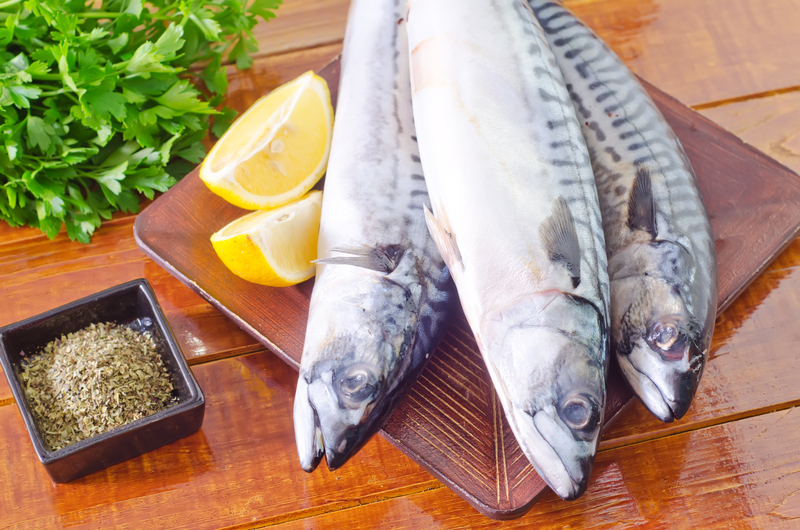Master the Art of Jewelry Cleaning for All Types
Posted on 15/06/2025
Master the Art of Jewelry Cleaning for All Types: The Ultimate Guide
Jewelry isn't just a fashion statement; it's a cherished part of our lives, carrying memories, investments, and stories with every gem and metal. To preserve their sparkle and value, mastering the art of jewelry cleaning for all types is essential. Whether you have gold, silver, pearls, or gemstones, each demands specific care. This comprehensive guide will walk you through expert tips, step-by-step instructions, and secrets to keeping every piece radiant.


Why Jewelry Cleaning Matters
Dust, sweat, lotions, and daily wear can dull even the most brilliant jewels over time. Learning how to clean jewelry properly not only restores its original beauty but also extends its lifespan. Clean pieces enhance your style, retain value, and avoid potential damage caused by built-up grime or improper techniques. When you master jewelry cleaning techniques, you protect both sentiment and sparkle.
Table of Contents
- Understanding Different Types of Jewelry
- Preparation: Key Considerations Before Cleaning
- Cleaning Gold Jewelry
- Cleaning Silver Jewelry
- Cleaning Gemstones: Diamonds, Sapphires, Emeralds & More
- How to Clean Pearls
- Cleaning Platinum and White Gold
- Tips for Cleaning Costume Jewelry
- Using Ultrasonic Jewelry Cleaners Safely
- Prolonging Your Jewelry's Shine: Preventive Care
- Frequently Asked Questions
Understanding Different Types of Jewelry
Jewelry comes in many forms and materials, each requiring its own cleaning approach. It's crucial to identify what your pieces are made from before you begin. The main types include:
- Gold - Pure or alloyed with other metals
- Silver - Sterling, fine, or plated
- Platinum - Highly durable and valuable
- White Gold - Often coated with rhodium
- Pearls - Organic and delicate
- Gemstones - Hard (diamond, sapphire), soft (opal, turquoise)
- Costume Jewelry - Base metals, glass, plastics
Knowing your jewelry types ensures you use the right cleaning method, preventing accidental damage and guaranteeing the long-term beauty of your items.
Preparation: Key Considerations Before Cleaning
Before you embark on any jewelry cleaning routine, consult the following checklist for maximum safety and success:
- Inspect for damage: Loose stones, cracked metal, or snapped clasps should be repaired first.
- Read any care instructions that came with your jewelry.
- Gather supplies: Mild dish soap, soft toothbrush, polishing cloth, lint-free towel, and bowls.
- Avoid harsh chemicals (especially bleach, ammonia, or acetone).
- Work over a soft surface (use a towel or bowl) to avoid losing pieces.
How to Clean Gold Jewelry
Gold jewelry cleaning is generally simple, but care must be taken not to scratch its soft surface or risk damage to set stones. Follow these steps for a professional shine:
- Mix a few drops of mild dish soap with warm (not hot) water.
- Soak the gold piece for 15-20 minutes to loosen grime.
- Gently scrub with a soft toothbrush, focusing on crevices.
- Rinse in clean water and pat dry with a lint-free cloth.
- Buff to a shine with a jewelry polishing cloth.
*Pro Tip: If your gold jewelry contains gemstones, do not submerge for extended periods. Instead, use a damp cloth for the settings.
How to Clean Silver Jewelry
Silver is beloved for its lustrous sheen, but it's prone to tarnishing. Cleaning silver jewelry requires removing the tarnish while preserving the underlying shine. Here's how:
- Create a paste with three parts baking soda to one part water, or use a commercial silver cleaner.
- Apply gently with a soft cloth, working the paste along the grain (not in circles).
- Rinse in cool water and dry thoroughly.
- Polish with a microfiber cloth to restore brilliance.
*Avoid: Silver dips on pieces with set stones or pearls and never use toothpaste, which can scratch.
Homemade Silver Cleaning Solution
If you prefer a natural method, try this:
- Line a bowl with aluminum foil.
- Add hot water, one tablespoon baking soda, and one tablespoon salt per cup of water.
- Submerge the silver, making sure it touches the foil. Wait 5 minutes.
- Rinse and polish dry.
Cleaning Gemstones: Diamonds, Sapphires, Emeralds & More
Gemstones add color and personality to jewelry but vary widely in hardness and sensitivity. Here's how to clean gemstone jewelry safely:
- Diamonds & Sapphires: Use a mixture of mild soap and water, brush with a soft toothbrush, and rinse well. Dry with a clean cloth for maximum sparkle.
- Emeralds, Opals, Turquoise: These are softer and more porous. Do not soak. Instead, wipe gently with a damp cloth and dry immediately. Never use steam or ultrasonic cleaners.
- Rubies & Garnets: Can usually be cleaned like diamonds but avoid exposure to acid or strong detergents.
*Important: Always check with a jeweler before cleaning any stone you're unsure about, especially antique or treated gems.
How to Clean Pearls
Pearls are organic and surprisingly delicate. Their nacre (outer layer) is vulnerable to acidic or abrasive substances. Cleaning pearl jewelry demands a gentle touch:
- Wipe with a soft, damp cloth after each wear.
- If deep cleaning is needed, use only a solution of mild soap and water. Dip a soft cloth into the mix (never submerge the strand), then wipe gently.
- Dry flat on a towel for several hours to prevent the silk string from stretching.
- Restring your pearls every few years if worn frequently.
Never: Use vinegar, bleach, or ultrasonic cleaners on pearls!
Cleaning Platinum and White Gold
Platinum jewelry is extremely durable but can develop a patina over time. For white gold, the rhodium plating can wear off, so avoid abrasive methods.
- Soak in a mixture of warm water and mild dish soap for 15-20 minutes.
- Gently scrub with a soft brush.
- Rinse thoroughly and buff dry.
- For white gold, have rhodium re-plated as needed by a professional.
Tips for Cleaning Costume Jewelry
Costume or fashion jewelry can be tricky. Often made with non-precious metals, plastics, glass, or glued stones, it's more prone to damage from moisture and harsh chemicals. Here's how you can clean costume pieces:
- Wipe with a dry, soft cloth to remove fingerprints and dirt.
- Slightly dampen a cloth with water and dab gently if needed--never soak.
- Avoid alcohol, acetone, or commercial cleaners which may strip finishes or dissolve glue.
- Let air dry completely before storing.
Using Ultrasonic Jewelry Cleaners Safely
Ultrasonic cleaners use vibrating sound waves to remove dirt from jewelry. While they're great for gold and diamonds, they should not be used for pearls, opals, turquoise, or jewelry with glued stones. Always check if your jewelry is safe for ultrasonic cleaning.
- Only fill the cleaner with water and a drop of mild dish soap.
- Avoid strongly colored solutions that may stain settings.
- Run the cleaner for the recommended cycle, then rinse and dry.
- Check settings after cleaning, as vibrations can loosen stones.
Prolonging Your Jewelry's Shine: Preventive Care
Prevention is the best defense against tarnish, dullness, and damage. By incorporating these tips into your routine, you ensure that your collection stays luminous:
- Store pieces separately in soft pouches or lined boxes to prevent scratches.
- Keep away from humidity--use silica gel sachets in storage areas.
- Take jewelry off when swimming, bathing, or doing household chores involving chemicals.
- Apply lotions, perfumes, and hairspray before jewelry, allowing them to dry before putting on your pieces.
- Remove rings before using hand sanitizer.
- Inspect regularly for loose settings or clasps.
Professional Cleaning and Maintenance
For valuable or antique pieces, consider professional cleaning once a year. Expert jewelers can deep-clean, polish, re-plate finishes, and inspect for necessary repairs, prolonging both the beauty and structural integrity of your jewelry.
Frequently Asked Questions on Jewelry Cleaning Techniques
Can I use vinegar to clean jewelry?
No. Vinegar is acidic and can erode some metals and damage gemstones and pearls. Stick to mild soap and water for most cleaning needs.
How often should I clean my jewelry?
Frequency depends on wear--every few weeks for heavily worn pieces, and at least twice a year for those worn less often. Pearls should be wiped after each use.
Is it safe to use toothpaste on jewelry?
No. Toothpaste contains abrasives that can scratch gold, silver, and gemstones.
Why does silver tarnish faster than gold?
Silver reacts with sulfur compounds in the air, causing tarnish. Gold, being a noble metal, resists tarnishing and corrosion, especially at higher karats.
What's the best way to dry jewelry after cleaning?
Always pat jewelry dry with a lint-free cloth and let it air dry completely before storage to avoid residual moisture, which can cause tarnish and deterioration of settings.
Conclusion: Shine On With Expert Jewelry Care
Mastering jewelry cleaning isn't just about aesthetic brilliance--it's about preserving your priceless memories and investments. Whether you own a family heirloom, a diamond engagement ring, or fun costume accents, regular thoughtful care will keep every piece glowing for generations. Remember, the key is to treat each type of jewelry with the specific attention it deserves--from gentle pearl wipes to precise gemstone cleaning.
By following these tested jewelry cleaning techniques, you'll not only dazzle on the outside but ensure your treasures remain radiant within. Explore, experiment carefully, and when in doubt, consult a professional jeweler. Your jewelry deserves nothing less!
- How to Clean Gold Jewelry
- How to Clean Silver Jewelry
- Gemstones and Diamond Cleaning
- Caring for Pearls
- Costume Jewelry Maintenance
Embrace the art of jewelry cleaning and let every piece of your collection shine with its original luster and charm!





